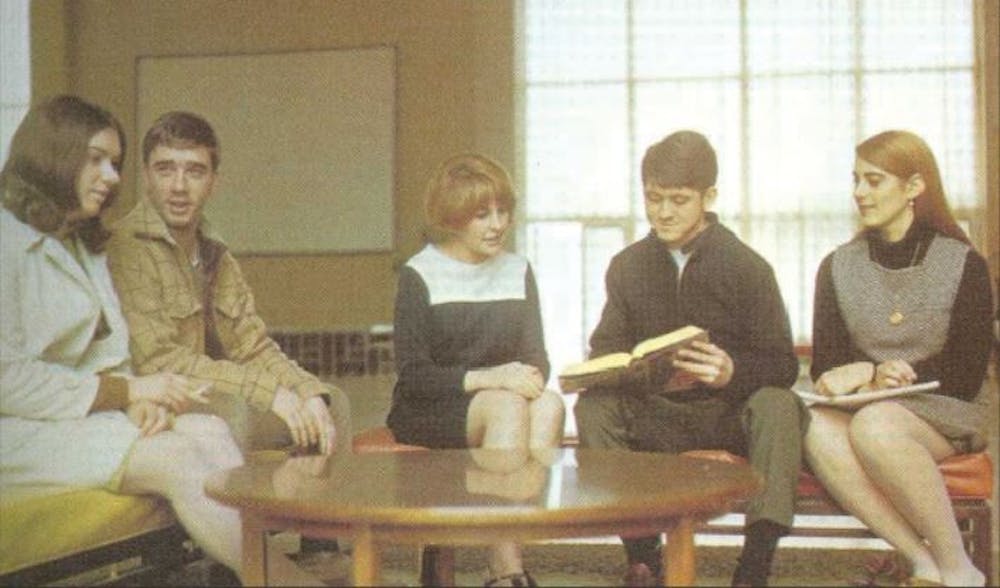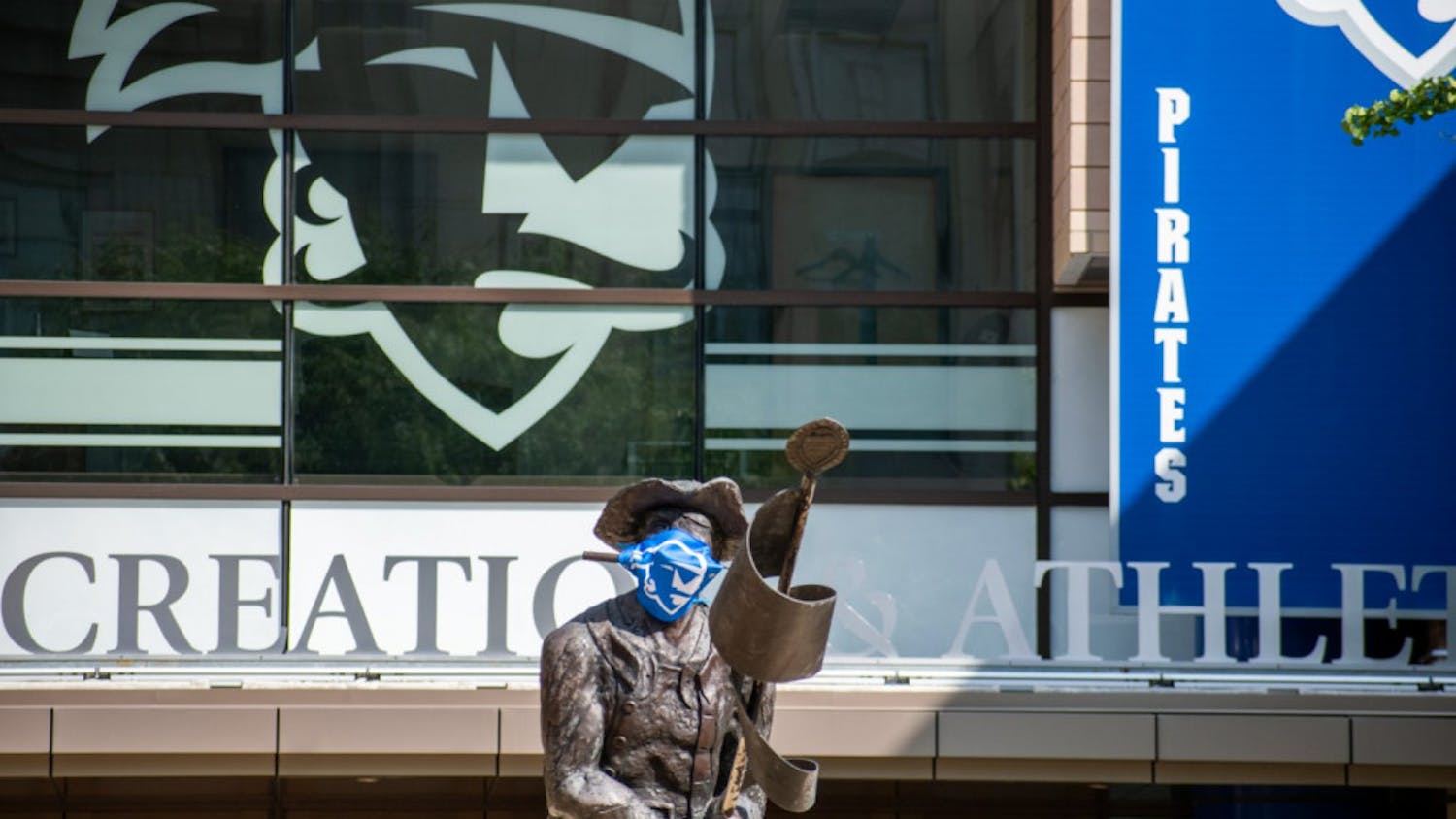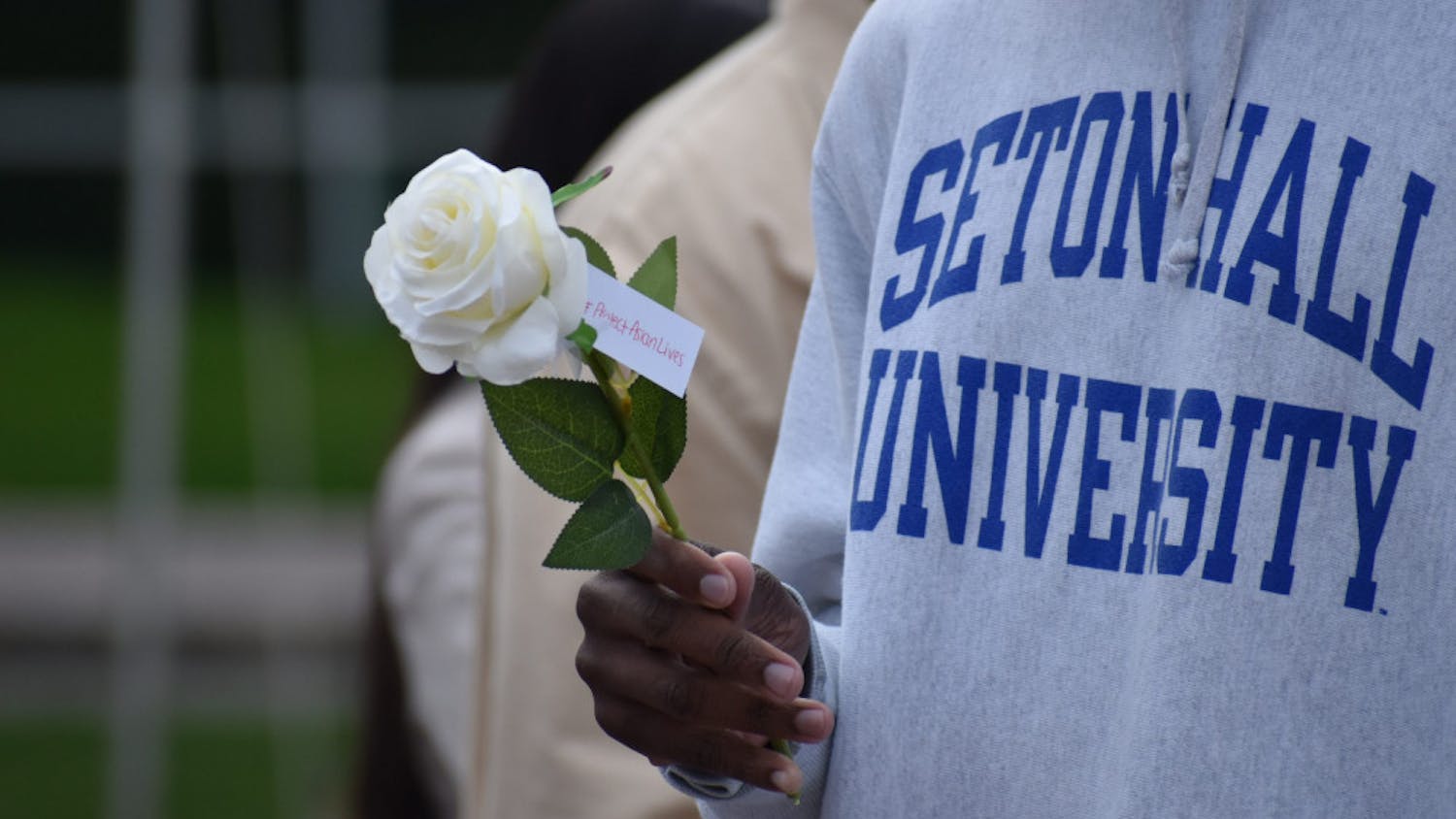During Charter Week, Seton Hall celebrates its decision to open its gates to women 50 years ago. But it wasn’t a simple story.
Seton Hall became co-educational in 1937, but until 1968 female students mainly studied at the satellite campuses in Newark, Patterson and Jersey City.
In the early 1960s, female nursing students would come to South Orange at night and complete their required lab work. These women would come to campus after most other classes were over, and their education was equaled to a big secret, but one that everyone knew. While many were supportive of SHU’s choice, it was a big change and there was much resistance.
[caption id="attachment_22321" align="alignnone" width="707"] Photo courtesy of Alan Delozier[/caption]
When women started attending Seton Hall at the satellite campuses, they were mainly nursing students and liberal arts majors. After World War II, there was A bigger push for female education and SHU continued to ride the trend.
“If you look at the years between 1955 and 1966 you have, throughout the country, an increase of about 140/150 percent of women looking to get degrees,” Dr. Dermot Quinn, a professor and director of graduate studies in the history department, said.
Seton Hall seized an opportunity to expand.
“It was thought to be revolutionary in 1968, but in some respects it is much more sensible to think of it as a natural evolution,” Quinn said.
While many were excited for women entering the University, others were not pleased. Some thought Seton Hall was not culturally, or physically ready, Quinn said. With women now on campus, Seton Hall now had to think about dorms and restrooms for women. For a long time women could only be commuters because there was no housing for them.
In the early 1970s, Aquinas Hall was built and the designated dorm for women. During this time, female professors and faculty were also introduced to SHU. Quinn said that some factors that contributed to the South Orange co-education push was the failure of the satellite campuses and the danger of Newark.
Women were not discouraged from taking on any major, but many of them stuck to nursing and liberal arts, while less went into science fields. The only program they were excluded from was the program that prepares men for priesthood. For a long time there weren’t sororities on campus and it left some women feeling isolated.
While it may have been a tough adjustment, women have greatly enhanced the programs and classes at SHU, according to University archivist Alan Delozier.
“Co-education has been a success in terms of integrating both men and women into the curriculum, into the Seton Hall mission, and into the Seton Hall experience,” Delozier said.
Some students say that while SHU has grown, stereotypes regarding women’s education remain.
Dejah Irizarry, a sophomore social and behavioral sciences major, said, “I think women here are thought to be a part of the nursing program because, for years, we have been seen as caretakers so when someone is a part of a major that is vastly different it comes as a surprise.”
According to Irizarry, Seton Hall made the right choice as she said women have proven to be a big part of society and SHU should be providing them with a quality education. Irizarry also said she imagines female students today face the same doubt and criticism they did 50 years ago.
Veronica Gaspa can be reached at veronica.gaspa@student.shu.edu.
Photo courtesy of Alan Delozier[/caption]
When women started attending Seton Hall at the satellite campuses, they were mainly nursing students and liberal arts majors. After World War II, there was A bigger push for female education and SHU continued to ride the trend.
“If you look at the years between 1955 and 1966 you have, throughout the country, an increase of about 140/150 percent of women looking to get degrees,” Dr. Dermot Quinn, a professor and director of graduate studies in the history department, said.
Seton Hall seized an opportunity to expand.
“It was thought to be revolutionary in 1968, but in some respects it is much more sensible to think of it as a natural evolution,” Quinn said.
While many were excited for women entering the University, others were not pleased. Some thought Seton Hall was not culturally, or physically ready, Quinn said. With women now on campus, Seton Hall now had to think about dorms and restrooms for women. For a long time women could only be commuters because there was no housing for them.
In the early 1970s, Aquinas Hall was built and the designated dorm for women. During this time, female professors and faculty were also introduced to SHU. Quinn said that some factors that contributed to the South Orange co-education push was the failure of the satellite campuses and the danger of Newark.
Women were not discouraged from taking on any major, but many of them stuck to nursing and liberal arts, while less went into science fields. The only program they were excluded from was the program that prepares men for priesthood. For a long time there weren’t sororities on campus and it left some women feeling isolated.
While it may have been a tough adjustment, women have greatly enhanced the programs and classes at SHU, according to University archivist Alan Delozier.
“Co-education has been a success in terms of integrating both men and women into the curriculum, into the Seton Hall mission, and into the Seton Hall experience,” Delozier said.
Some students say that while SHU has grown, stereotypes regarding women’s education remain.
Dejah Irizarry, a sophomore social and behavioral sciences major, said, “I think women here are thought to be a part of the nursing program because, for years, we have been seen as caretakers so when someone is a part of a major that is vastly different it comes as a surprise.”
According to Irizarry, Seton Hall made the right choice as she said women have proven to be a big part of society and SHU should be providing them with a quality education. Irizarry also said she imagines female students today face the same doubt and criticism they did 50 years ago.
Veronica Gaspa can be reached at veronica.gaspa@student.shu.edu.





